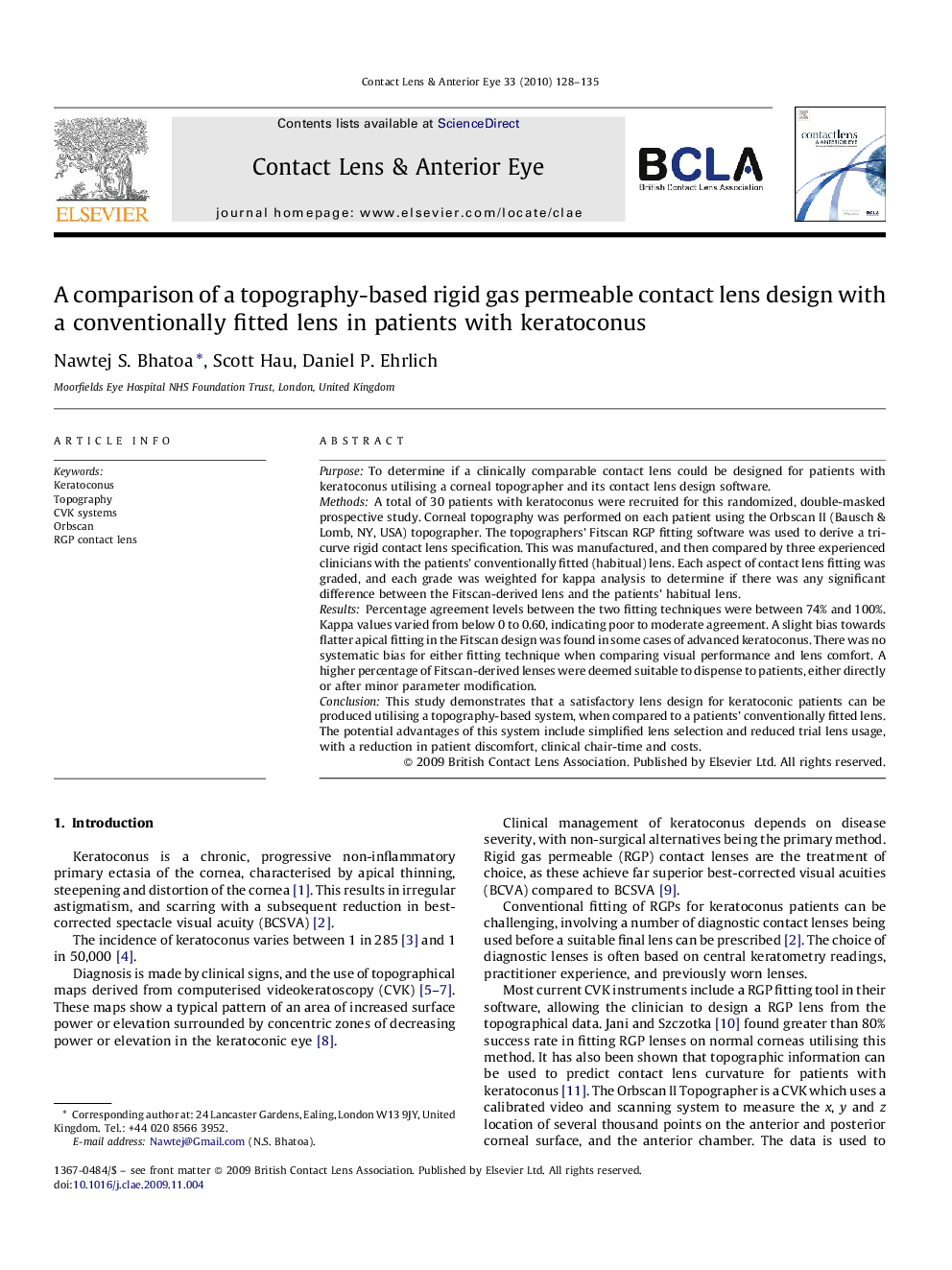| Article ID | Journal | Published Year | Pages | File Type |
|---|---|---|---|---|
| 2696829 | Contact Lens and Anterior Eye | 2010 | 8 Pages |
PurposeTo determine if a clinically comparable contact lens could be designed for patients with keratoconus utilising a corneal topographer and its contact lens design software.MethodsA total of 30 patients with keratoconus were recruited for this randomized, double-masked prospective study. Corneal topography was performed on each patient using the Orbscan II (Bausch & Lomb, NY, USA) topographer. The topographers’ Fitscan RGP fitting software was used to derive a tri-curve rigid contact lens specification. This was manufactured, and then compared by three experienced clinicians with the patients’ conventionally fitted (habitual) lens. Each aspect of contact lens fitting was graded, and each grade was weighted for kappa analysis to determine if there was any significant difference between the Fitscan-derived lens and the patients’ habitual lens.ResultsPercentage agreement levels between the two fitting techniques were between 74% and 100%. Kappa values varied from below 0 to 0.60, indicating poor to moderate agreement. A slight bias towards flatter apical fitting in the Fitscan design was found in some cases of advanced keratoconus. There was no systematic bias for either fitting technique when comparing visual performance and lens comfort. A higher percentage of Fitscan-derived lenses were deemed suitable to dispense to patients, either directly or after minor parameter modification.ConclusionThis study demonstrates that a satisfactory lens design for keratoconic patients can be produced utilising a topography-based system, when compared to a patients’ conventionally fitted lens. The potential advantages of this system include simplified lens selection and reduced trial lens usage, with a reduction in patient discomfort, clinical chair-time and costs.
